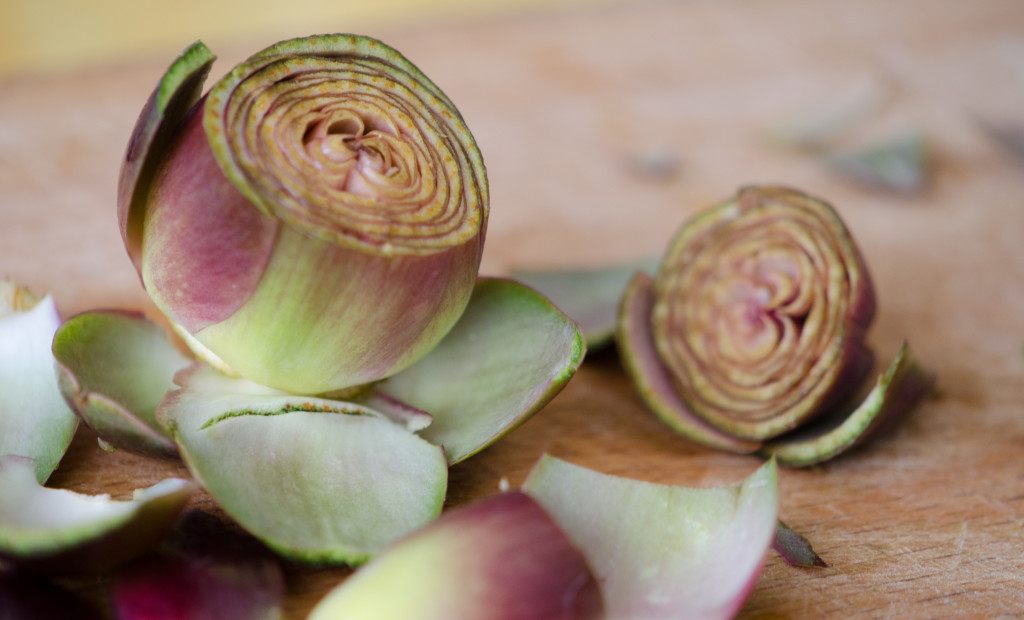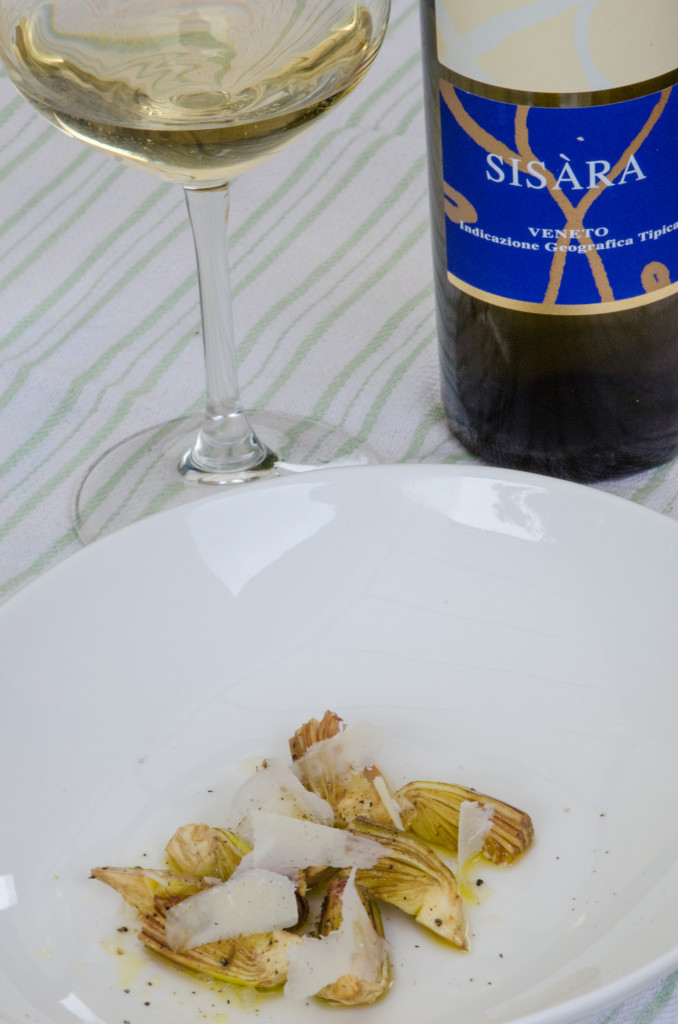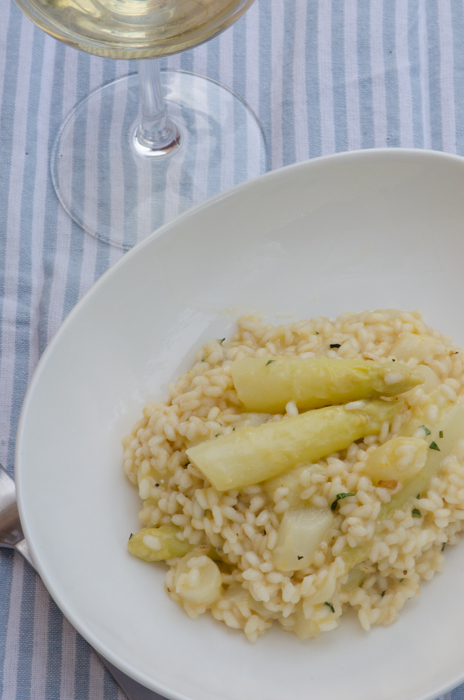 Our spring season cycling and hiking tours in Italy coincide perfectly with Northeast Italy’s obsession with a favorite harbinger of spring – the prized white asparagus. From Bassano del Grappa and Cimadolmo in the Veneto, moving north to Zambana in Trentino, and Terlan in Alto Adige, there are festivals and special tasting menus devoted to the sweet “white gold” of spring.
Our spring season cycling and hiking tours in Italy coincide perfectly with Northeast Italy’s obsession with a favorite harbinger of spring – the prized white asparagus. From Bassano del Grappa and Cimadolmo in the Veneto, moving north to Zambana in Trentino, and Terlan in Alto Adige, there are festivals and special tasting menus devoted to the sweet “white gold” of spring.
Besides the obvious – color – there is no there’s no difference between green and white asparagus — white asparagus is simply green asparagus that hasn’t been allowed to turn green. Legend has it that in the 1400s or so, an extremely violent hailstorm destroyed most of the harvest. The farmers, desperate for food of any kind, plowed the land under in a search for edible roots and tubers and discovered a delicacy: white asparagus.
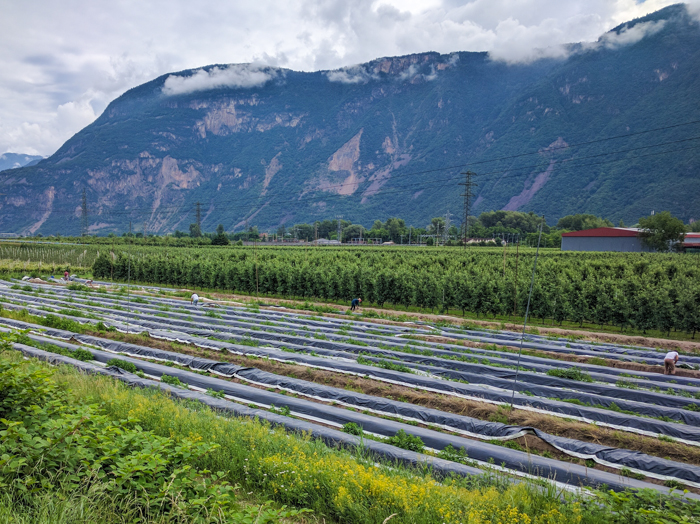 To cultivate white asparagus, as soon as the shoots peek through the soil, they are covered up with more soil, which continues as they grow. The stalks are always covered with a thick layer or mulch and now also a dark plastic tarp. Without exposure to sunlight, no photosynthesis starts, and the shoots remain white. This process is called etiolation, and creates pale white asparagus spears that have a more delicate in flavor and more tender than their green cousins.
To cultivate white asparagus, as soon as the shoots peek through the soil, they are covered up with more soil, which continues as they grow. The stalks are always covered with a thick layer or mulch and now also a dark plastic tarp. Without exposure to sunlight, no photosynthesis starts, and the shoots remain white. This process is called etiolation, and creates pale white asparagus spears that have a more delicate in flavor and more tender than their green cousins.
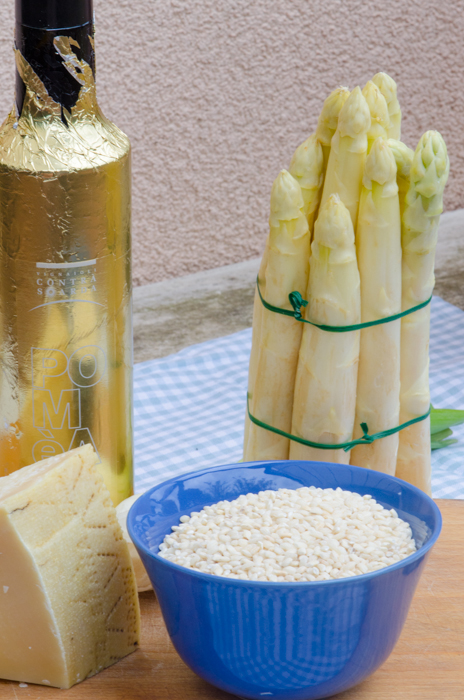 Due to its quality and delicacy, it is quite perishable and must be correctly conserved and served within a few days. Good preserving practices include immersing the asparagus in was between 6 and 8 degrees centigrade to inhibit oxidation. It is also beneficial to avoid prolonged exposure to light and open air.
Due to its quality and delicacy, it is quite perishable and must be correctly conserved and served within a few days. Good preserving practices include immersing the asparagus in was between 6 and 8 degrees centigrade to inhibit oxidation. It is also beneficial to avoid prolonged exposure to light and open air.
In terms of preparation, the lower ends of white asparagus must be peeled before cooking or consuming raw, and blanching carefully in salted water is the preferred method of cooking.
Eggs and asparagus is the classic combination on the table, but closely followed by white asparagus risotto.
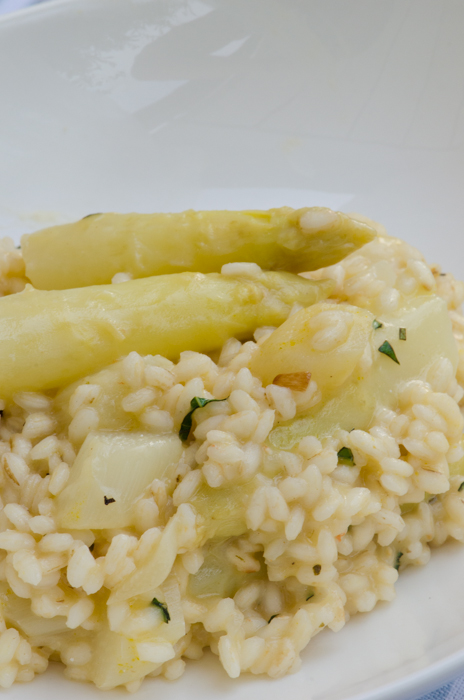 Risotto con Gli Asparagi
Risotto con Gli Asparagi
1 pound white asparagus (substitute green)
12 ounces risotto rice – Vialone nano, Carnaroli, Arbrorio
4 tablespoons butter
1 new onion, peeled and finely sliced
1/2 cup dry white wine
4 tablespoons extra virgin olive oil
5 cups vegetable or chicken broh
1 tablespoon minced fresh parsley
1/2 cup grated grana cheese
Kosher salt and pepper
Bring a large pot of water to a boil, add salt, and blanch the asparagus until tender, but still firm. Remove the asparagus from the pot, aadn immerse in a cold water bath to halt the cooking. Remove the tips and reserve. Cut the stems into 1/2 inch pieces.
Put the broth in a saucepan and heat.
Place 2 tablespoons of the butter in a large saute ban and melt over medium heat. Add the onion, and cook until tender and translucent, about 4 minutes.
Add the chopped asparagus stems, and cook for a few minutes, then add the rice and toast for a few minutes.
Add the wine, and when it has evaporated completely, begin to stir in the hot broth. Add a ladlefull of the hot stock and simmer, stirring gently, until the stock is absorbed. Continue adding the stock a ladlefull at a time, stirring and waiting until the stock is absorbed before the next addition of stock. Continue until the rice is al dente. The stock may not all be used.
When the risotto is done, stir in the remaining butter, grated cheese and parsley and season with salt to taste. Carefully stir in the reserved asparagus tips, and serve immediately.
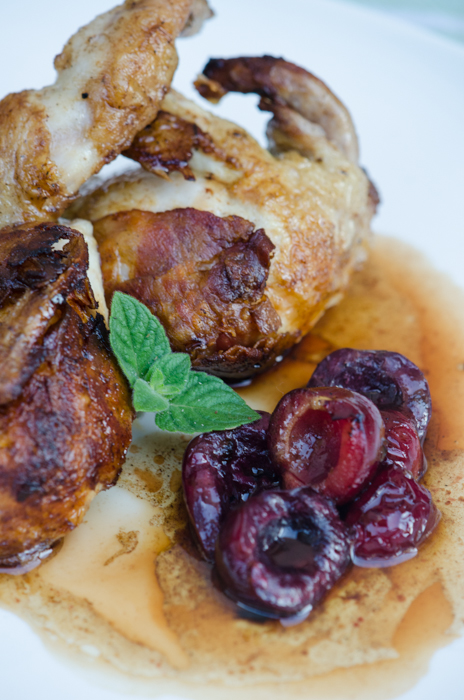 May and June is cherry season in Italy, and during our
May and June is cherry season in Italy, and during our 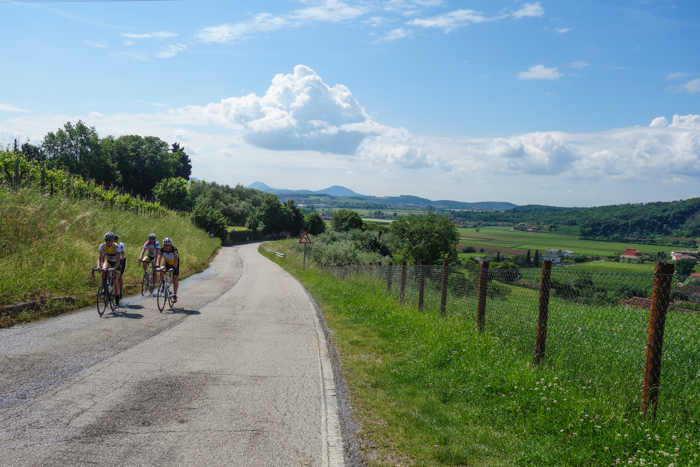 One of our favorite areas for cycling is the Berici Hills, just south of Vicenza. Besides their own wine DOC, and peas, mushrooms, black truffles, honey and olive oil, we pass through a couple of small areas which right now are bursting with cherries; trees bearing the fruit, and the local farmers out with their makeshift roadside stands with signs “Vendita Ciliegie”, Buy Cherries.
One of our favorite areas for cycling is the Berici Hills, just south of Vicenza. Besides their own wine DOC, and peas, mushrooms, black truffles, honey and olive oil, we pass through a couple of small areas which right now are bursting with cherries; trees bearing the fruit, and the local farmers out with their makeshift roadside stands with signs “Vendita Ciliegie”, Buy Cherries.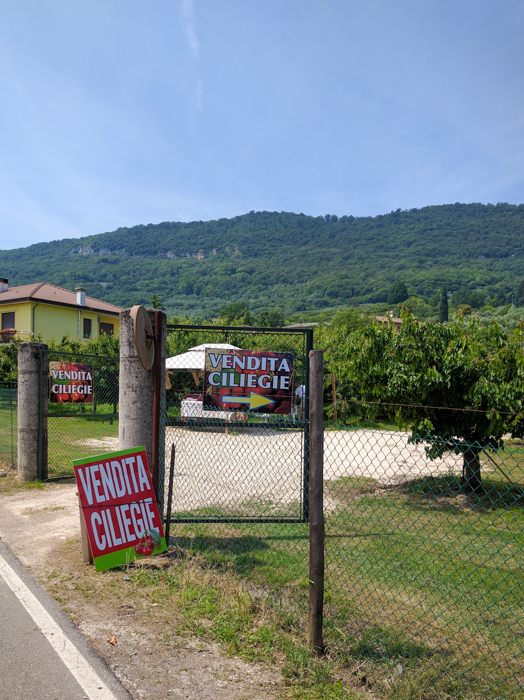 Here in the Berici Hills, the cherry orchards are in the south-east, at the foot of limestone cliffs, between the plain and the slopes of Mount Castellaro. The terrain is characterized by rocky outcrops and a limited topsoil layer. The steep slopes provide intense sun exposure, causing the fruit to ripen early.
Here in the Berici Hills, the cherry orchards are in the south-east, at the foot of limestone cliffs, between the plain and the slopes of Mount Castellaro. The terrain is characterized by rocky outcrops and a limited topsoil layer. The steep slopes provide intense sun exposure, causing the fruit to ripen early.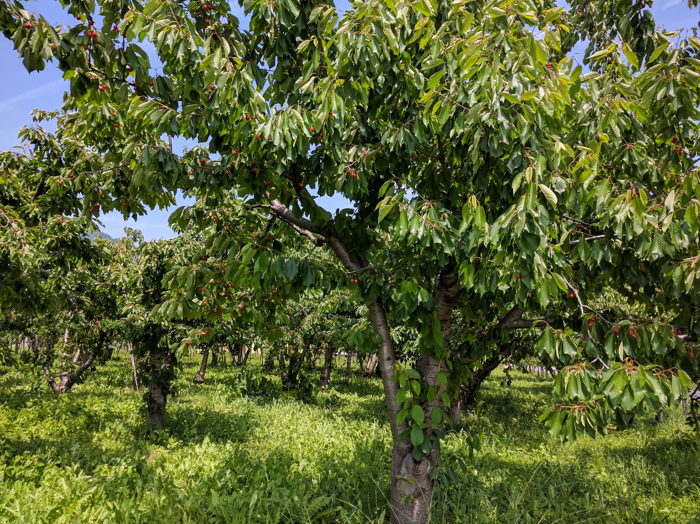 The hamlet of Castegnero is the center of production, with a long history of cultivation of their specific variety, known as the Mora di Castegnero (the Castegnero blackberry). In early spring, the trees are thick with flowers, and the resulting fruit is tender and dark, with a high sugar content. The “Festa dea Siaresa” is their cherry festival held in late May and early June. Visitors can purchase cherries and cherry products from vendors while enjoying entertainment, and feasting on traditional dishes and Colli Berici wines at local restaurants.
The hamlet of Castegnero is the center of production, with a long history of cultivation of their specific variety, known as the Mora di Castegnero (the Castegnero blackberry). In early spring, the trees are thick with flowers, and the resulting fruit is tender and dark, with a high sugar content. The “Festa dea Siaresa” is their cherry festival held in late May and early June. Visitors can purchase cherries and cherry products from vendors while enjoying entertainment, and feasting on traditional dishes and Colli Berici wines at local restaurants.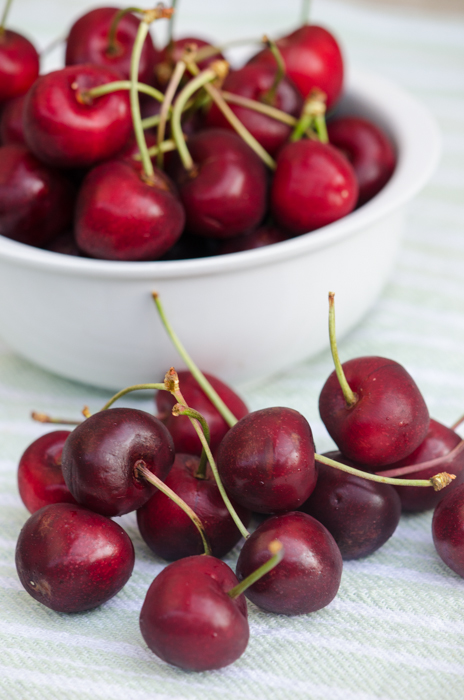 Just a couple of kilometers away, as we tour through the hamlets of Sarego and Meledo we find another variety of cherry, the Mora Cazzano, known as Durone di Verona elsewhere. Here the slopes are lower, the soil deeper, and the more limited sun exposure causes the fruit to ripen slightly later. This fruit is a bright red, and crunchy, with a very sweet flavor.
Just a couple of kilometers away, as we tour through the hamlets of Sarego and Meledo we find another variety of cherry, the Mora Cazzano, known as Durone di Verona elsewhere. Here the slopes are lower, the soil deeper, and the more limited sun exposure causes the fruit to ripen slightly later. This fruit is a bright red, and crunchy, with a very sweet flavor.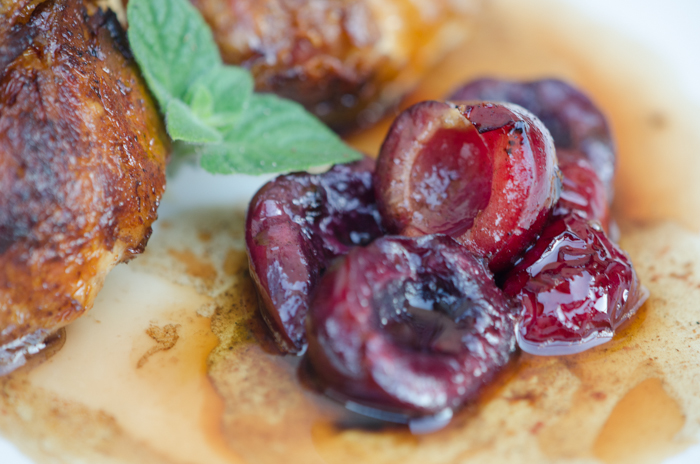 During cherry season, cherries appears in all types of dishes from salads to savory to desserts. The following recipe I’ve translated from an Italian cookbook containing 40 recipes all featuring cherries from the Veneto.
During cherry season, cherries appears in all types of dishes from salads to savory to desserts. The following recipe I’ve translated from an Italian cookbook containing 40 recipes all featuring cherries from the Veneto.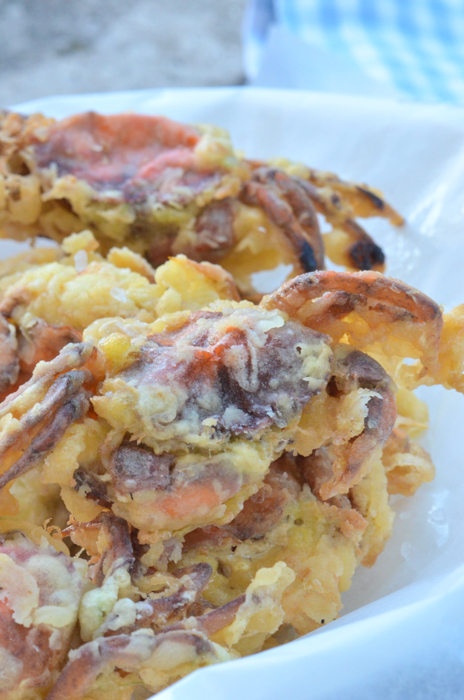 On our recent cooking class our hosts delivered a very special seasonal treat as we worked – a plate of hot moeche fritte, fried soft shell crabs. These unique crabs are a seasonal Venetian treat, as they are in the US. In Venice, they are referred to as moleche, moeche, or moeca in Venetian dialect. These crabs are a different species than found here in the US, they are smaller (about 2-3 inches), and are available twice a year – in the fall and spring. Maseneta indicates the female crab (with shell), which is particularly valued at the end of summer when, after having changed and having mated, she is mature and filled with eggs.
On our recent cooking class our hosts delivered a very special seasonal treat as we worked – a plate of hot moeche fritte, fried soft shell crabs. These unique crabs are a seasonal Venetian treat, as they are in the US. In Venice, they are referred to as moleche, moeche, or moeca in Venetian dialect. These crabs are a different species than found here in the US, they are smaller (about 2-3 inches), and are available twice a year – in the fall and spring. Maseneta indicates the female crab (with shell), which is particularly valued at the end of summer when, after having changed and having mated, she is mature and filled with eggs.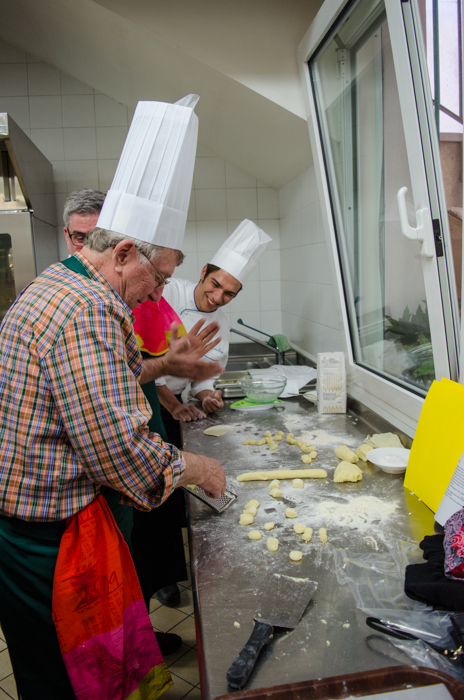 The moleche fishermen of Venice (molecanti) are masters as managing the molting process of their harvest. Raising crabs is a strictly local activity, passed down from generation to generation. The tradition is practiced in Burano and on the Giudecca but until the second half of the last century the raising of moeche was a secret known only to the crab farmers of Chioggia. The crabs are caught by placing nets with funnel shaped traps in the waters at the beginning of the season.
The moleche fishermen of Venice (molecanti) are masters as managing the molting process of their harvest. Raising crabs is a strictly local activity, passed down from generation to generation. The tradition is practiced in Burano and on the Giudecca but until the second half of the last century the raising of moeche was a secret known only to the crab farmers of Chioggia. The crabs are caught by placing nets with funnel shaped traps in the waters at the beginning of the season.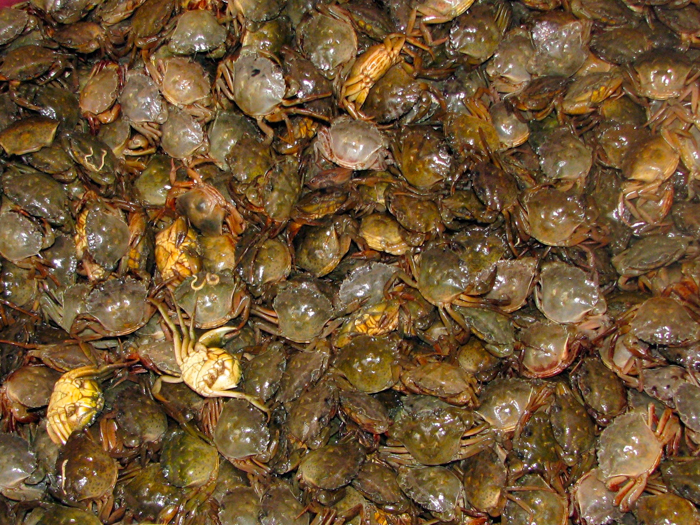 The fishermen separate the crabs from the fish and bring them back to big warehouses where they select the crabs about to undergo their seasonal change and place them in a particular tub. There is only a very brief 5-6 hour period in which the shells are soft enough to eat, as continued contact with water will harden them in a matter of hours. The trick is to identify those crabs that are just about to molt from those that are not; the former are stored in tanks until they have molted, at which point they are taken to markets such as the amazing fish market at Rialto. The latter are held back in a separate tub until their molting time has come. The crab stocks were almost depleted in the 1980s. Today they are farmed in various locations around Venice, and it now is an important industry in the region.
The fishermen separate the crabs from the fish and bring them back to big warehouses where they select the crabs about to undergo their seasonal change and place them in a particular tub. There is only a very brief 5-6 hour period in which the shells are soft enough to eat, as continued contact with water will harden them in a matter of hours. The trick is to identify those crabs that are just about to molt from those that are not; the former are stored in tanks until they have molted, at which point they are taken to markets such as the amazing fish market at Rialto. The latter are held back in a separate tub until their molting time has come. The crab stocks were almost depleted in the 1980s. Today they are farmed in various locations around Venice, and it now is an important industry in the region.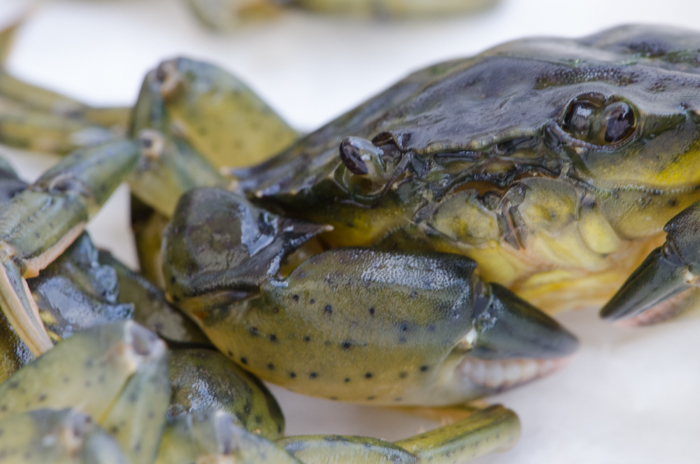 The fascination that the Venetians have with this strange crab has made its way into local expressions. The Lion of Saint Mark, the symbol of the Venetian republic, when represented frontally framed by its wings is called “Leon i moeca”, the crab lion. When a person repeatedly forgets to bring a promised gift to another person, one can say: “anca se’l deventa gransio no importa”, “even if it becomes a crab, it doesn’t matter”, in other words, even if too much time has gone by and the moeca’s shell grew back, the gift would still be appreciated. Also the expression “Andar in brodo de masenete”, “to become a crab broth” is used when something disappears, like masenete when they are cooked too long. And Venetians, when encouraging one another not to despair, say “in mancansa de masenete, bone anca e sate!”, “If we have no crabs, well, the legs are good tool!”
The fascination that the Venetians have with this strange crab has made its way into local expressions. The Lion of Saint Mark, the symbol of the Venetian republic, when represented frontally framed by its wings is called “Leon i moeca”, the crab lion. When a person repeatedly forgets to bring a promised gift to another person, one can say: “anca se’l deventa gransio no importa”, “even if it becomes a crab, it doesn’t matter”, in other words, even if too much time has gone by and the moeca’s shell grew back, the gift would still be appreciated. Also the expression “Andar in brodo de masenete”, “to become a crab broth” is used when something disappears, like masenete when they are cooked too long. And Venetians, when encouraging one another not to despair, say “in mancansa de masenete, bone anca e sate!”, “If we have no crabs, well, the legs are good tool!”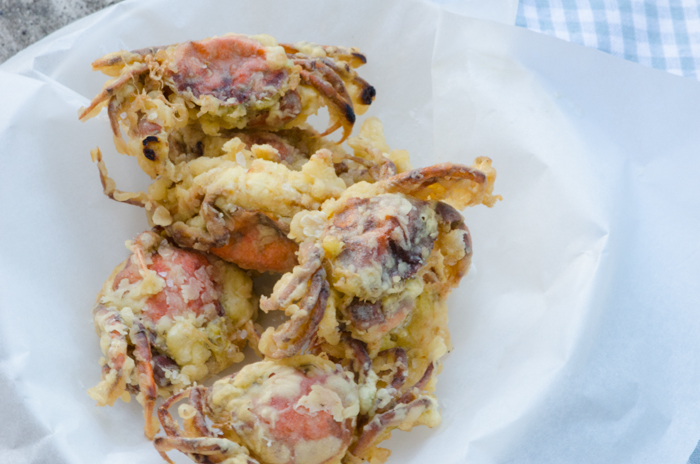 Moeche Fritte
Moeche Fritte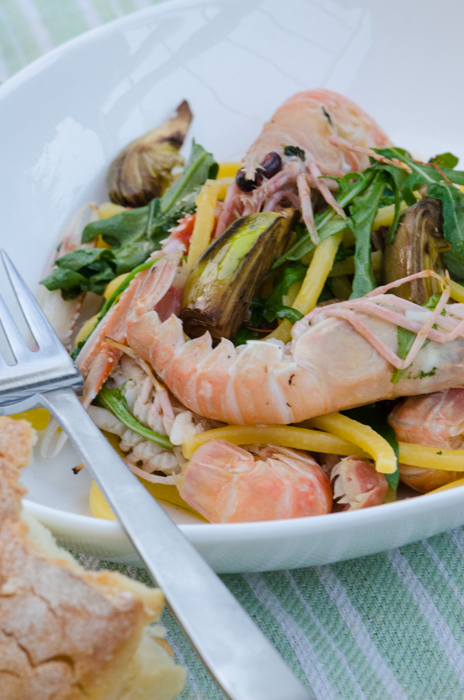 Our April
Our April 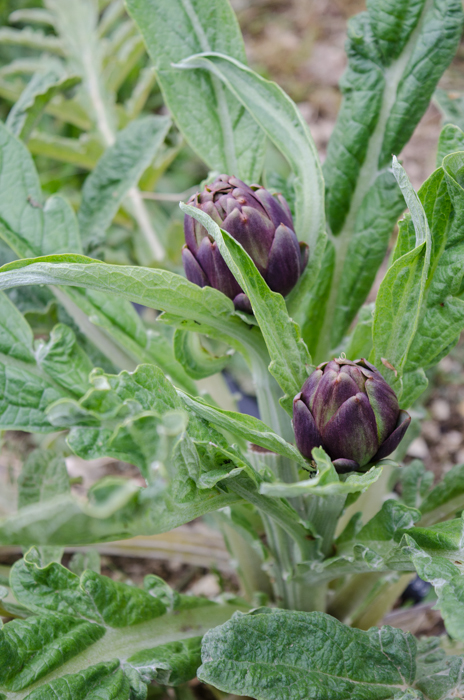 Unlike in the US, where we see only one variety of artichoke, in Italy you will see many varieties as you move from region to region, with different growing seasons and many different preparations. Some can be enjoyed raw, but there are many other ways to enjoy them – braised, fried, poached in oil.
Unlike in the US, where we see only one variety of artichoke, in Italy you will see many varieties as you move from region to region, with different growing seasons and many different preparations. Some can be enjoyed raw, but there are many other ways to enjoy them – braised, fried, poached in oil.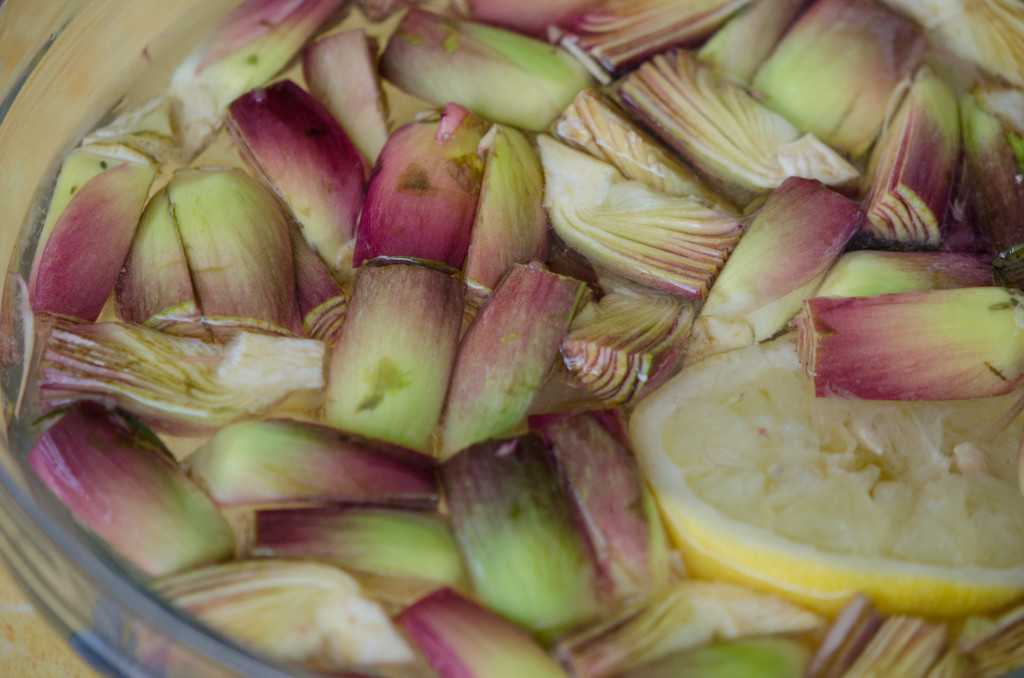 Italian cuisine is filled with legends about the origins and purported benefits of traditional dishes, especially a plant a unique as this one! The artichoke supposedly arrived in ancient Rome from Greece and Egypt. It was considered an aphrodisiac and was thought to ensure male children. According to legend, Jove, the father of all gods, fell for a young girl with blond hair, Cynara, who did not return his affections. As punishment, Jove transformed her into a spiny plant, the artichoke, hence its botanical name Cynara scolymas.
Italian cuisine is filled with legends about the origins and purported benefits of traditional dishes, especially a plant a unique as this one! The artichoke supposedly arrived in ancient Rome from Greece and Egypt. It was considered an aphrodisiac and was thought to ensure male children. According to legend, Jove, the father of all gods, fell for a young girl with blond hair, Cynara, who did not return his affections. As punishment, Jove transformed her into a spiny plant, the artichoke, hence its botanical name Cynara scolymas.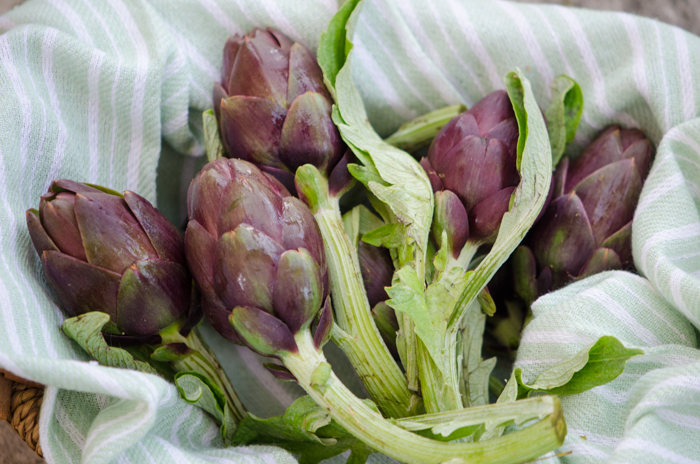 In 1446, Filippo Strozzi, a Florence banker and rival to the Medici family, brought artichoke seeds from Naples to Tuscany, and from there the cultivation spread across the rest of the Italian peninsula. In the Renaissance, the juice of the artichoke was administered as a pregnancy test: “Give a woman artichoke juice, if she vomits, she is pregnant.” Caterina de Medici was very fond of artichokes, and she brought them with her to France in 1533, when she married the heir to the French throne.
In 1446, Filippo Strozzi, a Florence banker and rival to the Medici family, brought artichoke seeds from Naples to Tuscany, and from there the cultivation spread across the rest of the Italian peninsula. In the Renaissance, the juice of the artichoke was administered as a pregnancy test: “Give a woman artichoke juice, if she vomits, she is pregnant.” Caterina de Medici was very fond of artichokes, and she brought them with her to France in 1533, when she married the heir to the French throne.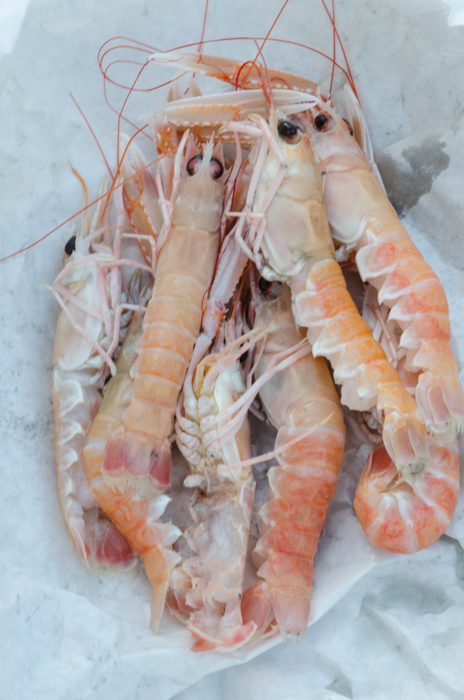
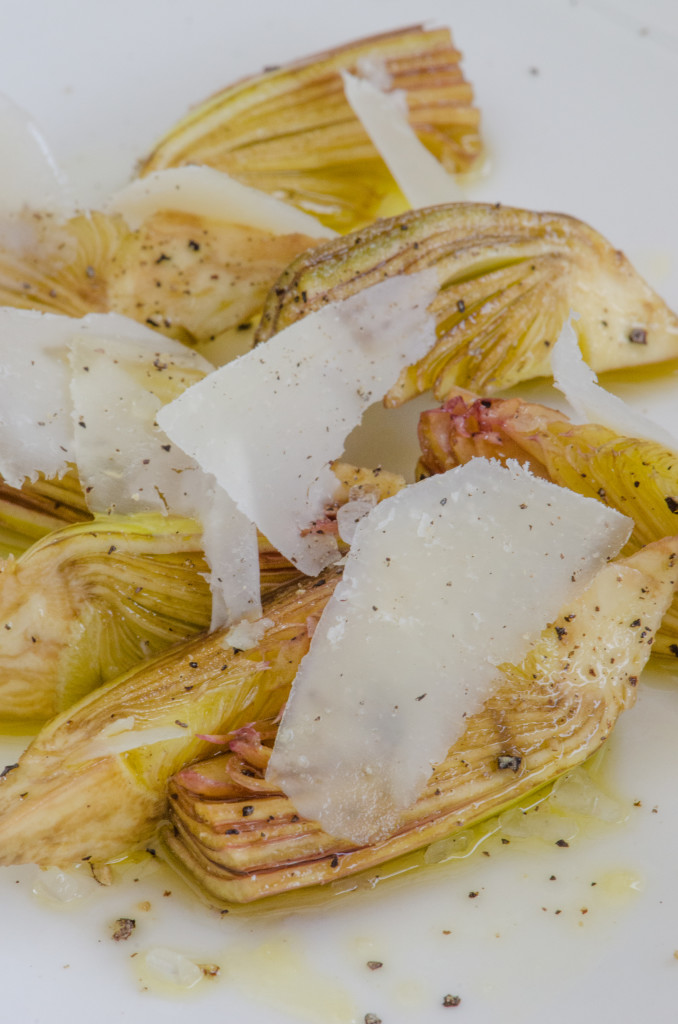 Just northeast of Venice lies the island of Sant’Erasmo – half the size of Venice, with many canals, but with 60 resident farmers out of 850 total population. On a visit to Venice’s Rialto market, a highlight of our
Just northeast of Venice lies the island of Sant’Erasmo – half the size of Venice, with many canals, but with 60 resident farmers out of 850 total population. On a visit to Venice’s Rialto market, a highlight of our 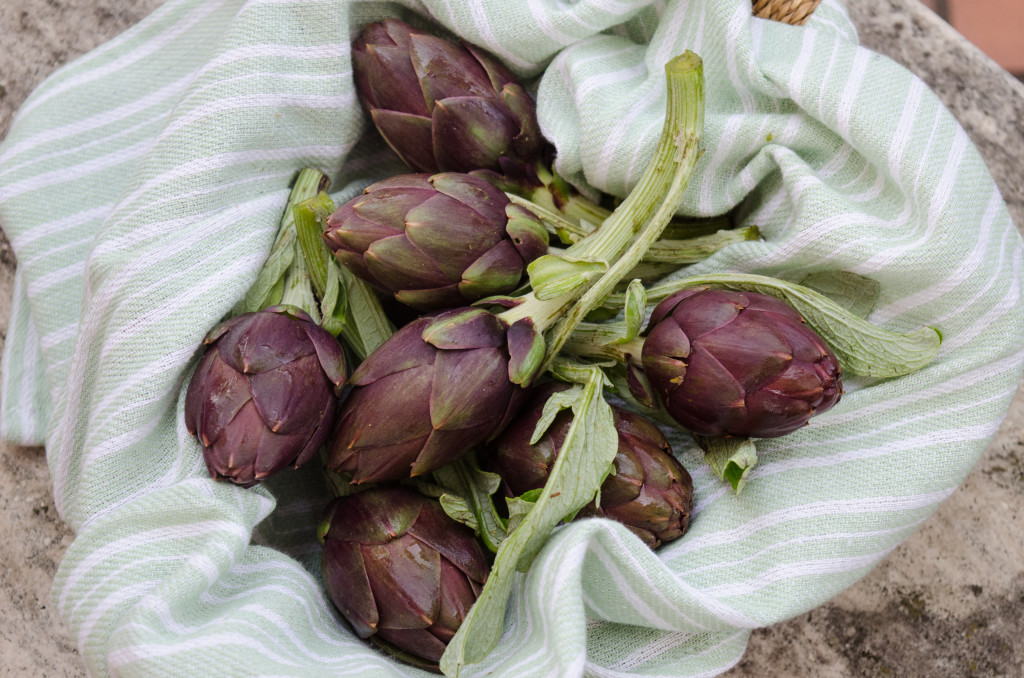
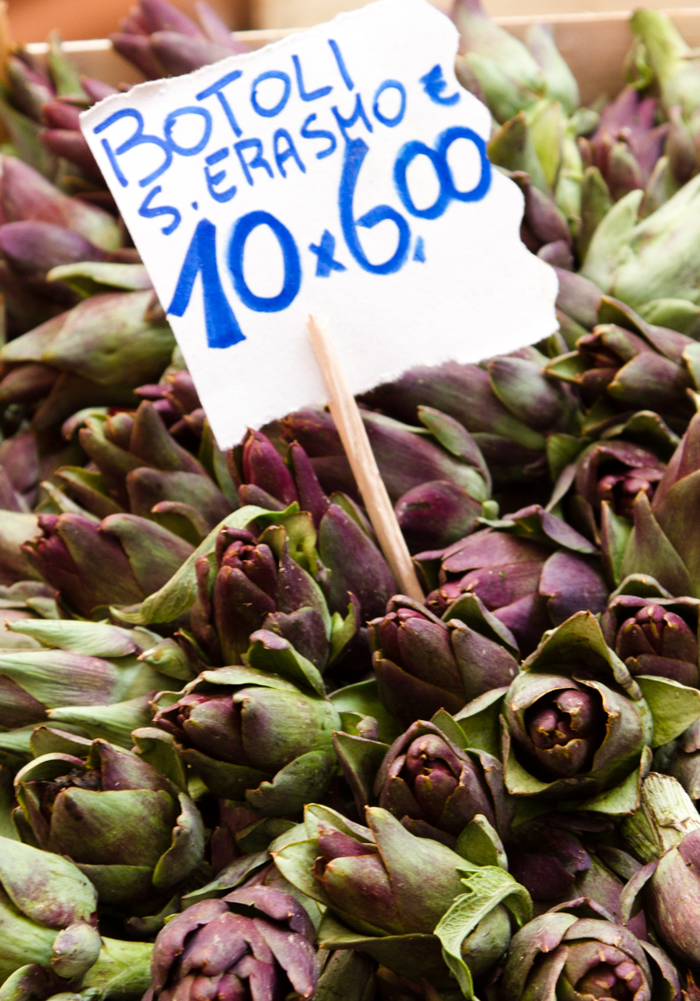 Castraure are so delicate that they are typically eaten raw. Only a limited number are available, and they are offered at only a few local restaurants for a brief period of time, and command high prices at the market. A small local market next to my apartment here had a few, and the vendor questioned me when I asked for 8 – “Do you know how much these cost? These are very special”. I didn’t think paying 60 cents each was particularly exorbitant, given how much I pay for very ordinary ones back in the US.
Castraure are so delicate that they are typically eaten raw. Only a limited number are available, and they are offered at only a few local restaurants for a brief period of time, and command high prices at the market. A small local market next to my apartment here had a few, and the vendor questioned me when I asked for 8 – “Do you know how much these cost? These are very special”. I didn’t think paying 60 cents each was particularly exorbitant, given how much I pay for very ordinary ones back in the US.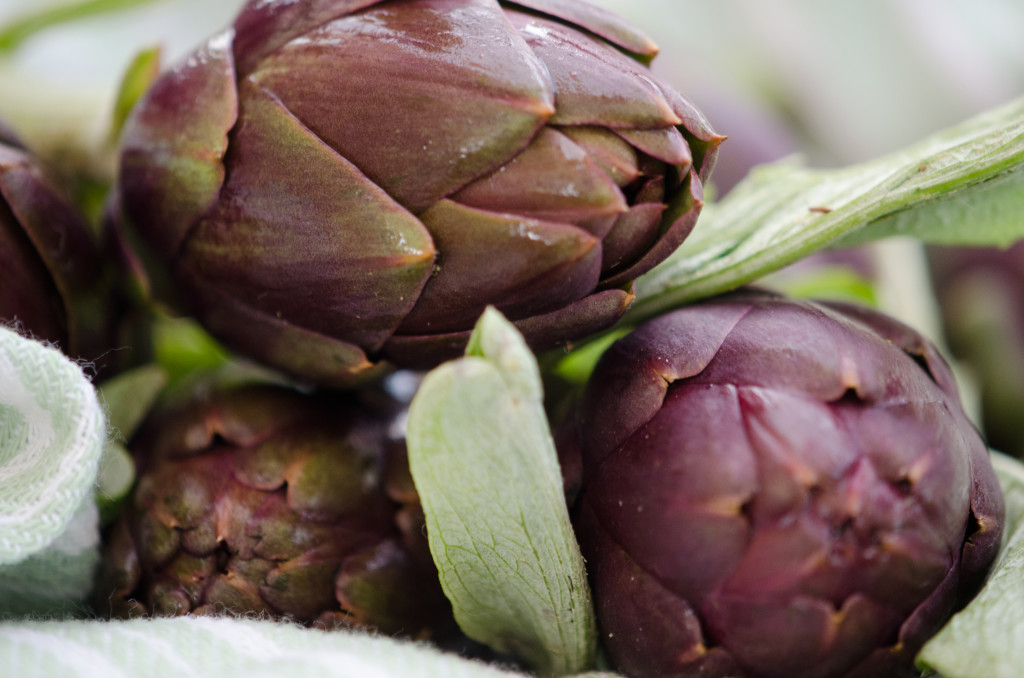 Here’s a recipe from the now-defunct “La Cucina Italiana” for the classic raw preparation. Next post will be on a pasta dish using carciofi violetti – and more on the history of artichokes in Italy.
Here’s a recipe from the now-defunct “La Cucina Italiana” for the classic raw preparation. Next post will be on a pasta dish using carciofi violetti – and more on the history of artichokes in Italy.